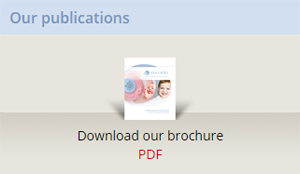The term salpingostomy refers to the formation of an opening in the fallopian tubes in cases of hydrosalpinges. Salpingostomy is performed in order to unblock the fimbrial part of the fallopian tube (of the hydrosalpinx). In the past, salpingostomy was the only solution to hydrosalpinges. Nowadays, following the successful application of assisted reproduction programs, its usefulness is debatable as it offers a probability of tubal patency of up to 80% and a pregnancy rate from 0 to 25%. The chances of an ectopic pregnancy after salpingostomy may be up to 5%. As a matter of fact, there are many who support that the fallopian tubes must be removed or ligated prior to proceeding with IVF due to their negative effect on pregnancy rates.
As far as the surgical approach of hydrosalpinges with salpingostomy, there are many (Donnez, Dubuisson, Canis, Nezhat, Manhes) that support that in certain cases selected with strict criteria, the pregnancy rates approximate these of assisted reproduction. Prognostic factors for the result are the degree of distension of the fallopian tube, the presence of folds, the presence of endotubal adhesions and the microscopic and macroscopic condition of the fallopian tube mucosa.
According to Donnez, the distension of the fallopian tubes is classified in 5 categories, with category 1 that refers to fimbrial phimosis with limited patency (he mentions 60% pregnancy rates) having the best prognosis and category 5 that refers to hydrosalpinx with thick walls and lack of folding (for which salpingectomy is recommended) having the worst prognosis.
On a technical level, mobilization of the fallopian tube and the ovary with lysis of any adhesions is initially undertaken. Following that the hydrosalpinx is opened with laser CO2, its patency is evaluated and the condition of the duct is roughly assessed. The procedure is completed with the eversion of the hydrosalpinx distal ends (cuff neostomy) with the aid of SwiftLase.

Α: Hydrosalpinx (laparoscopic image).
B,C: The hydrosalpinx is opened with the aid of special hooks and laser CO2 (laparoscopic image).
D: The opened distal ends are everted (cuff neostomy) with the aid of SwiftLase (laparoscopic image).
Ε: The final result, with methylene blue coming out freely towards the peritoneal cavity (laparoscopic image).
































